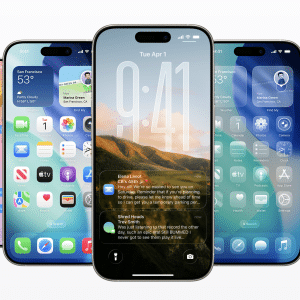The iOS 19 rumor, shared by leaker Majin Bu, indicates that iPhones with USB-C ports will gain a “Stage Manager-like interface” when connected to external monitors. Unlike the current mirroring functionality, which simply duplicates the iPhone’s screen, this upgrade would allow users to extend their workspace, running multiple apps at once for tasks like presentations, editing, or enhanced media viewing. 9to5Mac suggests this feature, while niche for external display use, is likely a stepping stone for the iPhone Fold’s larger internal display.
Stage Manager, first introduced in iPadOS 16, enables resizable, overlapping app windows, offering a desktop-like experience. Adapting this for iOS could address a long-standing limitation: the iPhone’s single-app focus. For users, this means greater flexibility—imagine editing a document while referencing a browser or watching a video alongside a note-taking app, all on a foldable iPhone’s unfolded screen, roughly the size of an iPad mini.
The iPhone Fold Connection
The iPhone Fold, rumored to debut in late 2026, is expected to function as a standard iPhone when folded, with a 5.5-inch outer display, and unfold into a 7.8-inch screen resembling an iPad mini, per analyst Ming-Chi Kuo. This dual-form factor demands a software overhaul to support multitasking on the larger display. 9to5Mac posits that Apple is using iOS 19’s external display feature to test and refine this system in real-world scenarios before the foldable’s launch.
Apple’s strategy appears pragmatic. By introducing the multitasking framework a year early, the company can gather user feedback and iron out kinks. The iPhone Fold’s success will hinge on a seamless transition between folded and unfolded states, requiring iOS to adapt dynamically. The Stage Manager-style interface could ensure that apps scale effectively, maintaining usability whether on a compact outer screen or an expansive inner one.
Why It Matters for Users
For tech enthusiasts and casual users alike, the iPhone Fold promises a versatile device that combines portability with tablet-like functionality. A foldable iPhone could replace the need for both a phone and a small tablet, streamlining workflows for professionals and creatives. For instance, a photographer could edit high-resolution images on the unfolded screen while referencing emails, or a student could take notes during a video lecture without juggling devices.
The iOS 19 multitasking upgrade also enhances the iPhone’s utility today. Connecting an iPhone to a monitor for presentations or editing could appeal to professionals who travel light, reducing reliance on laptops. While external display use may remain niche, it sets a precedent for iOS to evolve beyond its single-app roots, aligning with Apple’s vision for more unified software across its ecosystem.
Apple’s Broader Software Ambitions
The iOS 19 redesign, described by Bloomberg’s Mark Gurman as the biggest since iOS 7, aims to unify Apple’s platforms, drawing inspiration from visionOS’s glass-like elements and depth. Features like rounded icons, floating search bars, and enhanced tab views are expected to create a cohesive experience across iPhone, iPad, and Mac. The multitasking upgrade aligns with this goal, ensuring iOS 19 is ready for the iPhone Fold’s unique demands, such as horizontal and vertical orientations.
Apple’s focus on cross-platform consistency is critical for the foldable’s success. Unlike Android competitors like Samsung’s Galaxy Z Fold, which adapt existing software, Apple is redesigning iOS to natively support foldable hardware. This approach could yield a more polished experience, avoiding the clunky adaptations seen in early Android foldables.
Challenges and Opportunities
Developing the iPhone Fold and its software presents significant challenges. The device’s reported $2,000 price tag, per Gurman and Kuo, positions it as a premium offering, potentially limiting its market. Production complexities may also constrain initial supply, with Kuo estimating 3-5 million units in 2026. Additionally, Apple must minimize the display crease—a common issue in foldables—with reports indicating Samsung’s display unit has achieved a near-crease-free panel for Apple.
Yet, Apple’s entry could revitalize the stagnating foldable market, which Display Supply Chain Consultants note has slowed to 5% growth in 2024 and may decline in 2025. Apple’s brand loyalty and ecosystem could drive demand, especially if the iPhone Fold delivers unmatched integration with services like iCloud and Apple Intelligence.
Looking Ahead
The iOS 19 multitasking rumor, set to be unveiled at WWDC 2025, hints at Apple’s meticulous preparation for the iPhone Fold. By testing Stage Manager-style functionality on external displays, Apple is ensuring its foldable debut is both innovative and reliable. For users, this could mean a device that redefines mobile productivity, blending the iPhone’s portability with the iPad’s versatility.
As Apple refines iOS 19 and its foldable hardware, the tech world awaits a potential game-changer. The iPhone Fold, backed by a reimagined iOS, could set a new standard for foldable devices, proving that Apple’s late entry was worth the wait.















